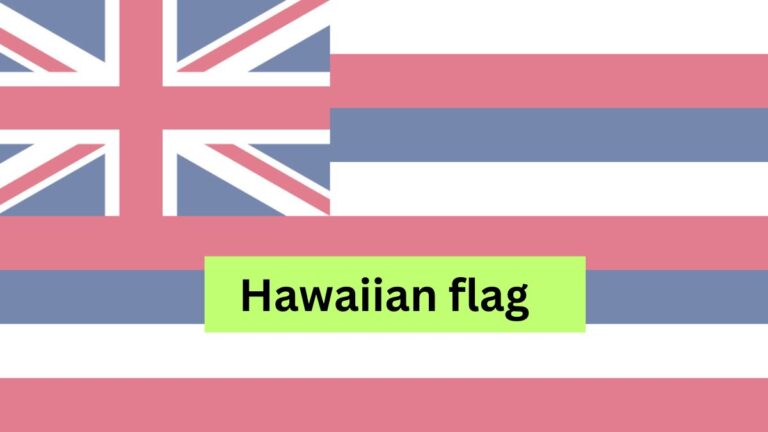Loan Disclaimers in the United States: A Guide for Borrowers [2024]

When you’re considering taking out a loan, whether it’s for a home, car, or personal expenses, understanding the terms and conditions is crucial. Loan disclaimers play a vital role in ensuring transparency and protecting borrowers’ rights. Here we will delve into the specifics of loan disclaimers in the United States, covering everything from legal requirements to common practices.
What Loan disclaimers in the united states?
A loan disclaimer is a legal document provided by lenders that outlines the terms and conditions of a loan agreement. It contains important information such as interest rates, repayment schedules, fees, penalties, and consequences for defaulting on the loan.
Read more: Aloha Unveiled: The Intriguing Saga Behind Hawaii Flag [updated in 2024]
Why Do Loan disclaimers in the united states?
Loan disclaimers are essential because they help borrowers make informed decisions about their loans. By understanding the terms and conditions of the loan, borrowers can avoid surprises and manage their finances effectively. Loan disclaimers matter because they provide transparency and protect both lenders and borrowers. Here’s why:
- Clarity
- Legal Protection
- Compliance
- Risk Mitigation
What Are Loan Disclaimers in the United States?
A loan disclaimer is a legally mandated statement provided by lenders to borrowers. Its purpose is to disclose essential information about the loan, helping borrowers make informed decisions. Here are the key components typically found in loan disclaimers:
What are the key elements of Loan Disclaimers in the United States
- Interest Rates: The disclaimer must clearly state the interest rate at which the loan accrues. Whether it’s a fixed rate or variable rate, borrowers need to know how much they’ll pay in interest over the loan term.
- Fees and Charges: Lenders must disclose any fees associated with the loan. These may include origination fees, late payment fees, prepayment penalties, and more. Borrowers should be aware of these costs upfront.
- Loan Terms: The disclaimer outlines the loan’s duration (e.g., 15 years, 30 years) and the repayment schedule. It also specifies whether the loan has a balloon payment or other unique features.
- Risks and Obligations: Borrowers need to understand the risks involved. For example, if it’s a variable-rate mortgage, the disclaimer should explain that the interest rate can fluctuate. Additionally, borrowers should be aware of their obligations, such as maintaining insurance coverage on a financed vehicle.
What are the Legal Framework of Loan Disclaimers in the United States

1. Legal Framework: Truth in Lending Act (TILA)
The Truth in Lending Act (TILA) is a federal law that governs lending practices. It ensures that borrowers receive clear and accurate information about credit terms. Here’s how TILA impacts loan disclaimers:
- TILA Disclosure Statement: Lenders provide borrowers with a TILA disclosure statement, which includes essential loan details. This statement covers annual percentage rate (APR), finance charges, and total payments over the loan term.
- Right of Rescission: TILA grants borrowers a three-day right of rescission for certain types of loans (e.g., home equity loans). During this period, borrowers can cancel the loan without penalty.
2. Equal Credit Opportunity Act (ECOA)
The Equal Credit Opportunity Act (ECOA) prohibits lenders from discriminating against borrowers based on protected characteristics such as race, religion, gender, marital status, or national origin. While not directly related to disclaimers, ECOA ensures fair lending practices.
Read more:
- How To Become Financially Independent Without Doing Traditional Job in 2024
- 15 Most Expensive Spectacles In The World [2024]
- How to Tuck in a Shirt effortlessly: Clear Guide [2024]
Common Practices: Loan Disclaimers in the United States
- Online Applications: When applying for loans online, borrowers often encounter disclaimers during the application process. These disclaimers highlight key terms and conditions.
- Promissory Notes: The promissory note, a legal document outlining the borrower’s promise to repay the loan, typically includes a section with disclaimers.
- Mortgage Disclosures: For home loans, lenders provide a set of disclosures, including the Loan Estimate and Closing Disclosure. These documents contain essential information about the loan.
Common Misconceptions about Loan Disclaimers in the United States
- Loan Disclaimers Are Irrelevant: Some borrowers mistakenly believe that loan disclaimers are mere formalities.
- All Loan Disclaimers Are the Same: Not true! Different types of loans (such as mortgages, personal loans, or auto loans) have specific disclaimers tailored to their terms.
- Loan Disclaimers Are Just Fine Print: While disclaimers may contain detailed information, they are far from insignificant fine print. Borrowers should carefully review them before signing any loan agreement. Ignoring disclaimers can lead to costly surprises down the road
Penalties of Loan Disclaimers in The United States
- Prepayment Penalties: This type of disclaimer states that the borrower will face a penalty fee if they pay off the loan early.
- Variable Interest Rates: Loans with variable rates can fluctuate over the life of the loan, often tied to market indexes like the prime rate.
- Balloon Payments: Some loans are structured with lower payments for a set number of years, followed by one large “balloon” payment at the end. A disclaimer will specify the timing and amount of this payment. If the borrower cannot afford the balloon payment, they may need to refinance.
What are the legal consequences if a lender fails to provide accurate disclaimers?
If lender fails to provide accurate disclaimers, it can have serious legal consequences. Let’s explore some of these repercussions:
- Lawsuits and Legal Actions
- Penalties Under the Truth in Lending Act (TILA)
- Psychological and Financial Distress for Borrowers
Conclusion: Loan disclaimers in the united states
Loan disclaimers are more than just fine print—they empower borrowers to make informed choices. As a borrower, always read and understand the disclaimers before signing any loan agreement. If you have questions, consult the lender or seek professional advice.





